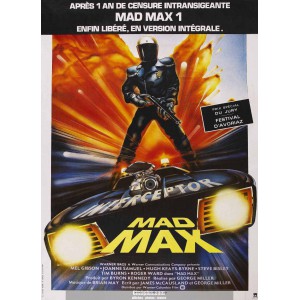We are a Filipino-Chinese couple living in the heart of Manila. We have been together for 20 years and decided to make this podcast to share our life experiences. Our podcast has no format and may discuss random things like relationships, recommended food in Binondo or about our philosophy in life. If you like our podcast, don’t forget to click the subscribe/follow button and give us a 5 star rating ^.^ Please visit our FB page @kwentuhansessionsph and ig page @kwentuhansessions. You can als ...
…
continue reading
Content provided by The Field Day Podcast. All podcast content including episodes, graphics, and podcast descriptions are uploaded and provided directly by The Field Day Podcast or their podcast platform partner. If you believe someone is using your copyrighted work without your permission, you can follow the process outlined here https://player.fm/legal.
Player FM - Podcast App
Go offline with the Player FM app!
Go offline with the Player FM app!
Episode #17 Jonathan Rayner on the Mad Max Films
Manage episode 225594779 series 2083908
Content provided by The Field Day Podcast. All podcast content including episodes, graphics, and podcast descriptions are uploaded and provided directly by The Field Day Podcast or their podcast platform partner. If you believe someone is using your copyrighted work without your permission, you can follow the process outlined here https://player.fm/legal.
This is a threshold moment, Johnny.
The Mad Max world teeters on the edge of reason and on the edge of existence. It is difficult to think of a more highly-charged and high-octane film franchise that has reached a mass global audience. The four iconic films are among the most recognisable and influential movies of the past few decades. Writer on Australian cinema, Jonathan Rayner, explains what is special about these films, how they came to be, and what they have come to mean both at home and across the world.
 He describes the endless desert roads of Mad Max, a place where violence awaits and where, perhaps, the sublime is to be glimpsed. The first Mad Max film came out 40 years ago, born of an Australian film policy that was looking for indigenous and authentically Australian stories and content.
He describes the endless desert roads of Mad Max, a place where violence awaits and where, perhaps, the sublime is to be glimpsed. The first Mad Max film came out 40 years ago, born of an Australian film policy that was looking for indigenous and authentically Australian stories and content.
Did they get what they were looking for? Did they even know what they were looking for?
The weird mashup of science fiction and Hollywood westerns, TV cop shows and punk aesthetics established a look and feel for dystopian futures that are still to be found in film today. The 40-year progress of the franchise also provide a revealing lens through which to observe important trends in the recent history of cinema.
This is the first of several film-themed podcast episodes from us at Field Day. In the next couple of months, you can look forward to a critique of Irish state policy in relation to film, a history of Irish newsreels, and a preview of a documentary on the Satanic Panic that visited the streets of Belfast in the early 1970s.
 Jonathan Rayner is Reader in Film Studies at the University of Sheffield. He is the author of an authoritative history of Australian cinema, Contemporary Australian Cinema (2000), and of books on the directors Michael Mann and of Peter Weir. He is also an authority on naval war film, while his recent focus has been on landscape in film.
Jonathan Rayner is Reader in Film Studies at the University of Sheffield. He is the author of an authoritative history of Australian cinema, Contemporary Australian Cinema (2000), and of books on the directors Michael Mann and of Peter Weir. He is also an authority on naval war film, while his recent focus has been on landscape in film.
This interview was recorded during the International Conference on Landscape and Cinema, held in the School of Arts and Humanities at the University of Lisbon. The conference was hosted by the Centre for Comparative Studies.
The post Episode #17 Jonathan Rayner on the Mad Max Films appeared first on Field Day.
17 episodes
Manage episode 225594779 series 2083908
Content provided by The Field Day Podcast. All podcast content including episodes, graphics, and podcast descriptions are uploaded and provided directly by The Field Day Podcast or their podcast platform partner. If you believe someone is using your copyrighted work without your permission, you can follow the process outlined here https://player.fm/legal.
This is a threshold moment, Johnny.
The Mad Max world teeters on the edge of reason and on the edge of existence. It is difficult to think of a more highly-charged and high-octane film franchise that has reached a mass global audience. The four iconic films are among the most recognisable and influential movies of the past few decades. Writer on Australian cinema, Jonathan Rayner, explains what is special about these films, how they came to be, and what they have come to mean both at home and across the world.
 He describes the endless desert roads of Mad Max, a place where violence awaits and where, perhaps, the sublime is to be glimpsed. The first Mad Max film came out 40 years ago, born of an Australian film policy that was looking for indigenous and authentically Australian stories and content.
He describes the endless desert roads of Mad Max, a place where violence awaits and where, perhaps, the sublime is to be glimpsed. The first Mad Max film came out 40 years ago, born of an Australian film policy that was looking for indigenous and authentically Australian stories and content.
Did they get what they were looking for? Did they even know what they were looking for?
The weird mashup of science fiction and Hollywood westerns, TV cop shows and punk aesthetics established a look and feel for dystopian futures that are still to be found in film today. The 40-year progress of the franchise also provide a revealing lens through which to observe important trends in the recent history of cinema.
This is the first of several film-themed podcast episodes from us at Field Day. In the next couple of months, you can look forward to a critique of Irish state policy in relation to film, a history of Irish newsreels, and a preview of a documentary on the Satanic Panic that visited the streets of Belfast in the early 1970s.
 Jonathan Rayner is Reader in Film Studies at the University of Sheffield. He is the author of an authoritative history of Australian cinema, Contemporary Australian Cinema (2000), and of books on the directors Michael Mann and of Peter Weir. He is also an authority on naval war film, while his recent focus has been on landscape in film.
Jonathan Rayner is Reader in Film Studies at the University of Sheffield. He is the author of an authoritative history of Australian cinema, Contemporary Australian Cinema (2000), and of books on the directors Michael Mann and of Peter Weir. He is also an authority on naval war film, while his recent focus has been on landscape in film.
This interview was recorded during the International Conference on Landscape and Cinema, held in the School of Arts and Humanities at the University of Lisbon. The conference was hosted by the Centre for Comparative Studies.
The post Episode #17 Jonathan Rayner on the Mad Max Films appeared first on Field Day.
17 episodes
All episodes
×Welcome to Player FM!
Player FM is scanning the web for high-quality podcasts for you to enjoy right now. It's the best podcast app and works on Android, iPhone, and the web. Signup to sync subscriptions across devices.






